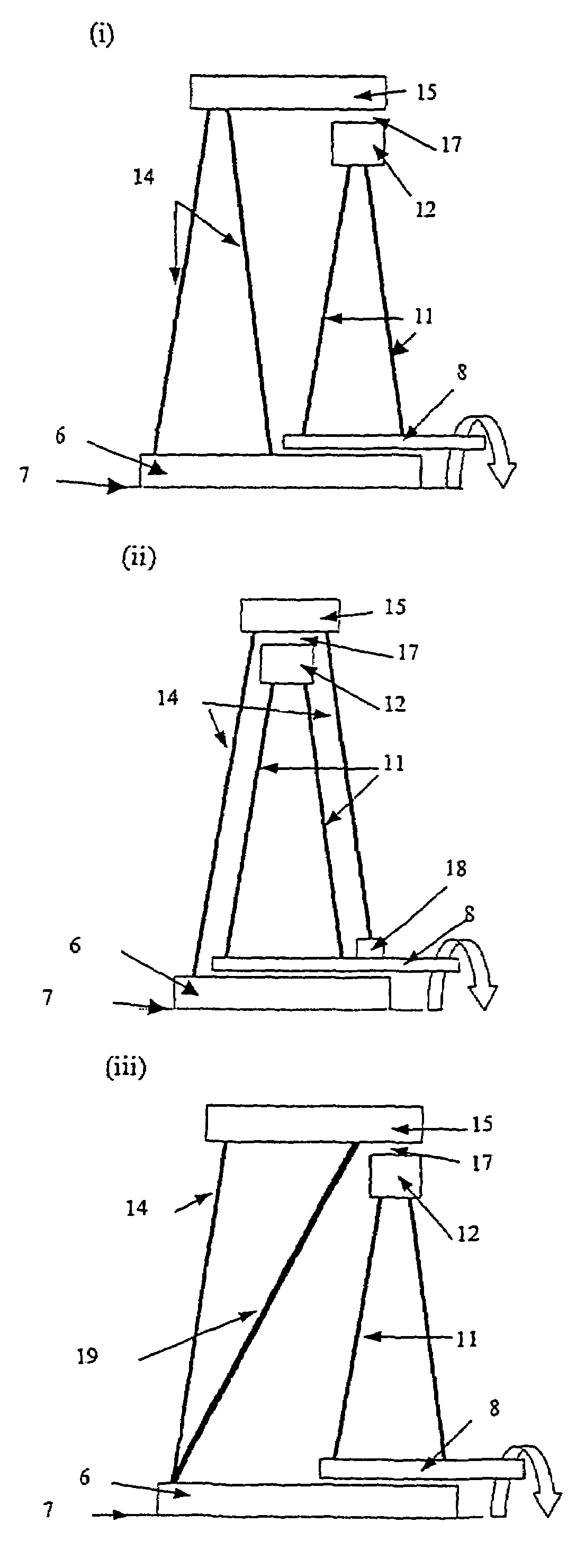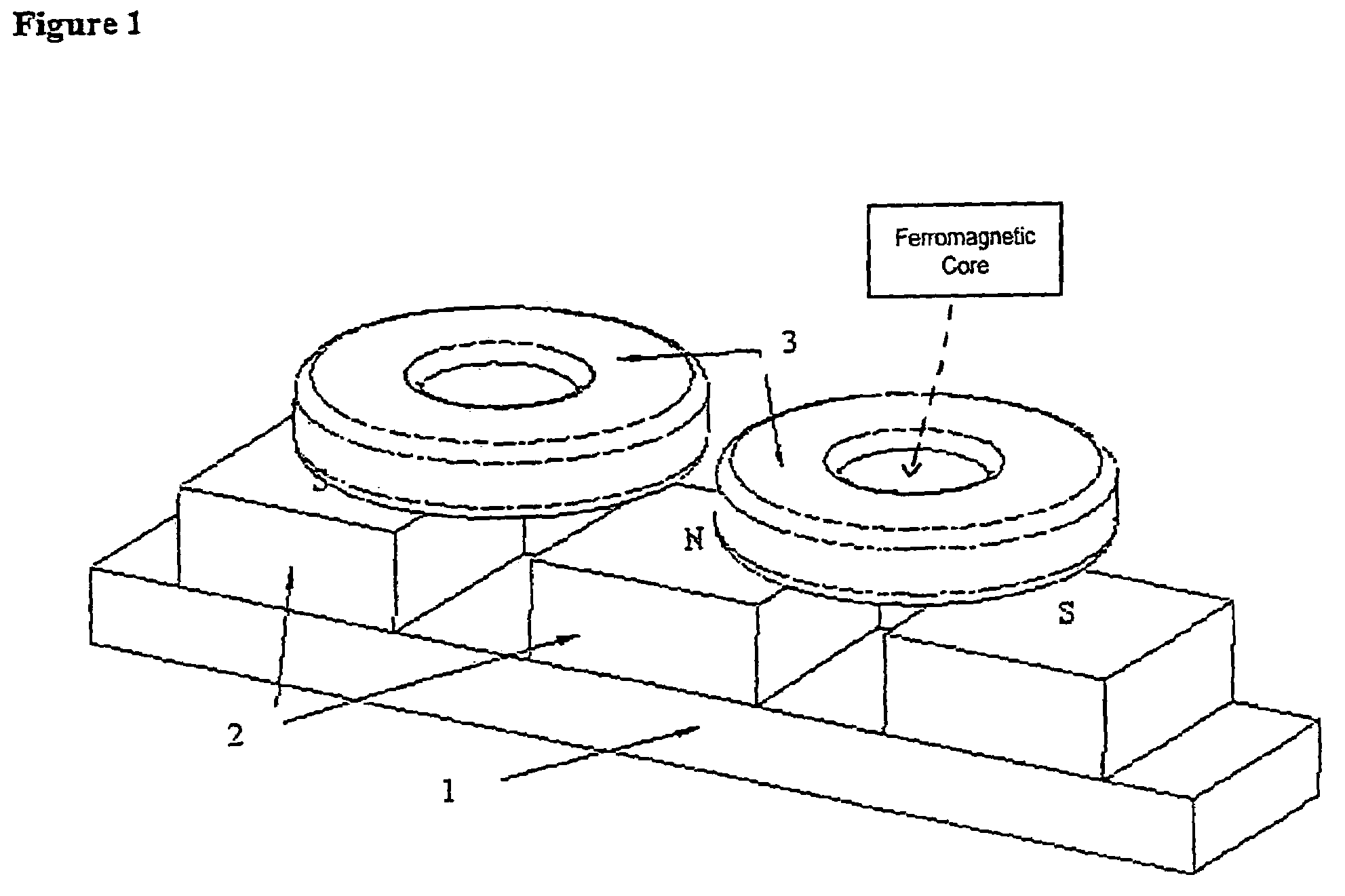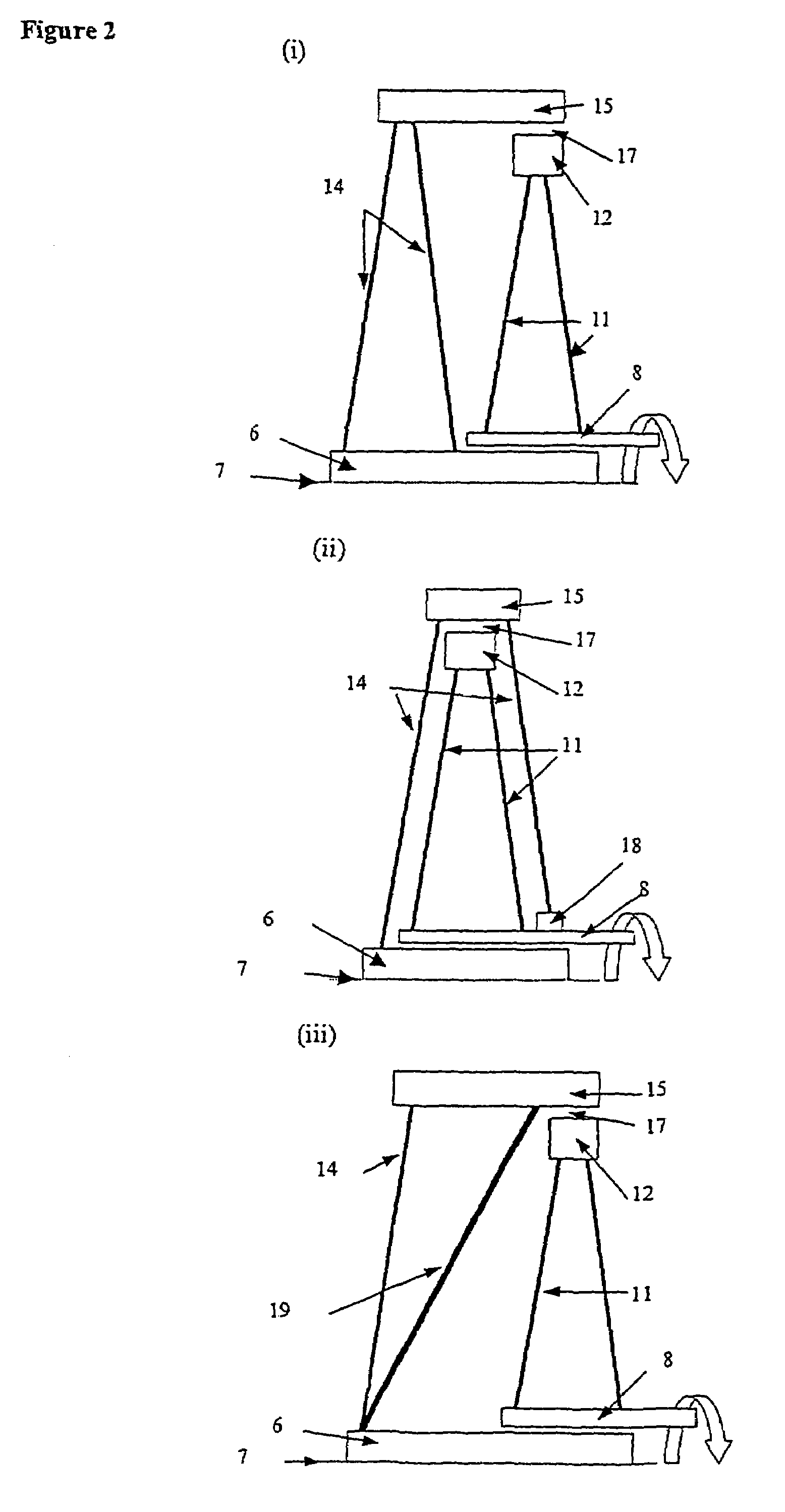Rotor and electrical generator
a technology of electrical generators and rotors, applied in the direction of wind energy generation, motors, dynamo-electric machines, etc., can solve the problems of complex multi-stage gearboxes, unnecessary gearboxes, and require maintenance, so as to improve the size to weight and/or power to weight performan
- Summary
- Abstract
- Description
- Claims
- Application Information
AI Technical Summary
Benefits of technology
Problems solved by technology
Method used
Image
Examples
Embodiment Construction
[0060]A preferred electromagnetic configuration is as shown in FIG. 1. In this example a ferromagnetic cylinder (1) makes up the rotor back iron and carries neodymium-iron-boron permanent magnets (2) on its outer surface. These may be fixed in any suitable manner, for example using adhesive, but the magnetic forces alone might be sufficient to retain the magnets in position. The magnets are polarised radially and create a multipolar distribution of magnetic flux in the space surrounding the rotor. The stator structure supports a set of copper coils (3), whose axes are directed radially, on a non magnetic backing (not shown). Adhesive or other fixing may be used to fix them in place. Coils may be embedded in the support structure. This will provide good electrical insulation.
[0061]As the rotor turns the flux linkage with each coil changes cyclically and alternating emf is induced in each coil. In contrast to prior art systems, no iron core is provided for the reasons set out above.
[0...
PUM
 Login to View More
Login to View More Abstract
Description
Claims
Application Information
 Login to View More
Login to View More - R&D
- Intellectual Property
- Life Sciences
- Materials
- Tech Scout
- Unparalleled Data Quality
- Higher Quality Content
- 60% Fewer Hallucinations
Browse by: Latest US Patents, China's latest patents, Technical Efficacy Thesaurus, Application Domain, Technology Topic, Popular Technical Reports.
© 2025 PatSnap. All rights reserved.Legal|Privacy policy|Modern Slavery Act Transparency Statement|Sitemap|About US| Contact US: help@patsnap.com



